EXCLUSIVE by GLOWTRAVEL: Top 10 Wonders of the World. The hustle and bustle of our daily lives often trap us in a monotonous routine. As a result, we tend to forget that is not all about staring at spreadsheets or package deliveries. There is a big ol’ planet out there with millennials of human history and architectural marvels.
A world with mindblowing human architecture that compelled Greek historian
Herodotus to name the 7 Wonders of the Ancient World in the 5th century BC. Although only one of Herodotus’ seven wonders still remains today, countless incredible structures have been created since then. Today, we are going to reveal.
the top 10 wonders of the world.
10. The Great Pyramid of Giza
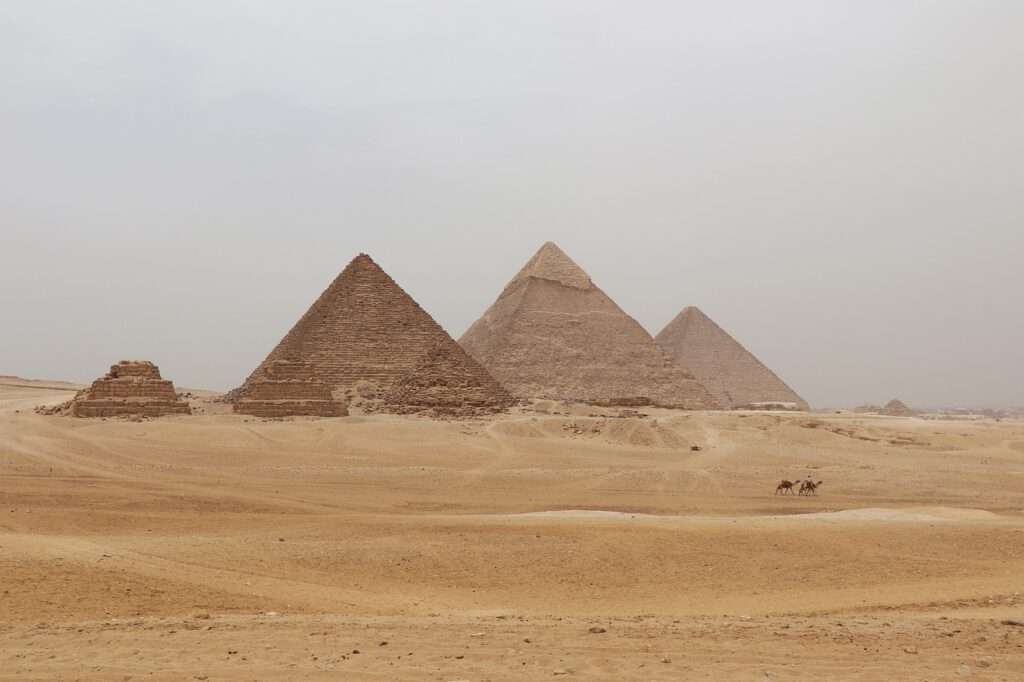
You can’t make a new list of the wonders of the world without mentioning one of the largest and oldest monuments in human history that is still around.
Built over 4,500 years and originally standing at 482 feet. It was covered with a polished limestone casing that made it catch the sun in a breathtaking way.
The Great Pyramid of Giza was built as a tomb for Pharoah Khufu. It was with over 2 million limestone blocks, some of which weighed as much as 80 tons.
The precision with which it was built is so mindblowing that even modern scientists struggle to explain how the incredible feat was achieved. This has led some to believe that the pyramid was built with the help of aliens. Unfortunately, over millennias, the Great Pyramid has suffered erosion, reducing its height to 449 feet.
Nevertheless, it remains a testament to ancient engineering and looks poised to stand for another 4,500 years.
9. Leshan Great Budah

Located in the Sichuan province of China stands the biggest stone Buddha statue in the world. Towering at 233 feet high, this marvel was created in the 9th century.
It was carved into the side of a cliff to safeguard the confluence of Min, Qingyi, and Dadu rivers, a site notorious for frequent and deadly accidents. I know what you are wondering.
Yes, miraculously, the presence of the Buddha stopped fatal accidents at the confluence. Over time, erosion and acid rain have not been kind to this majestic wonder, as plants and fungi are now growing on the statue. But don’t worry; restoration and preservation efforts are ongoing to combat these natural forces.
Despite the challenges, the Leshan Great Budah retains its cultural significance as it marks the time Buddhism first became established in Chinese territory.
8. Moai statues
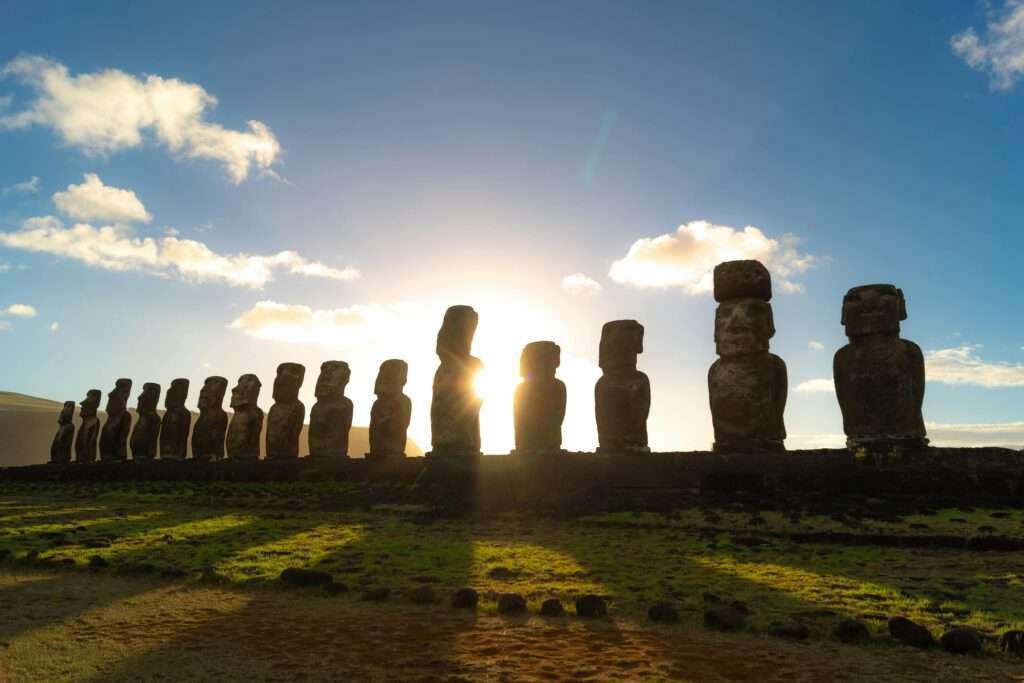
In a remote expanse of the Pacific lies mammoth-sized megaliths on the elusive Easter Island.
You have definitely seen these faces before in the Giga Chad memes, but the story behind them is even more fascinating. These impressive 10-metre-tall structures were made from soft Volcanic tuff between the 15th and 17th centuries.
While they are also popularly known as Easter Island heads, the statues are more than just heads. Though many are buried up to their shoulders, each was sculpted with full bodies. They were made in honor of Moai’s chieftain and prominent people of the land who passed away.
The wonders of the island leave a deep mystery in their wake. As scientists are still not sure how the ancient people of Rap Nui transported the statues that weighed more than 50 tons across the island.
7. Colousseum
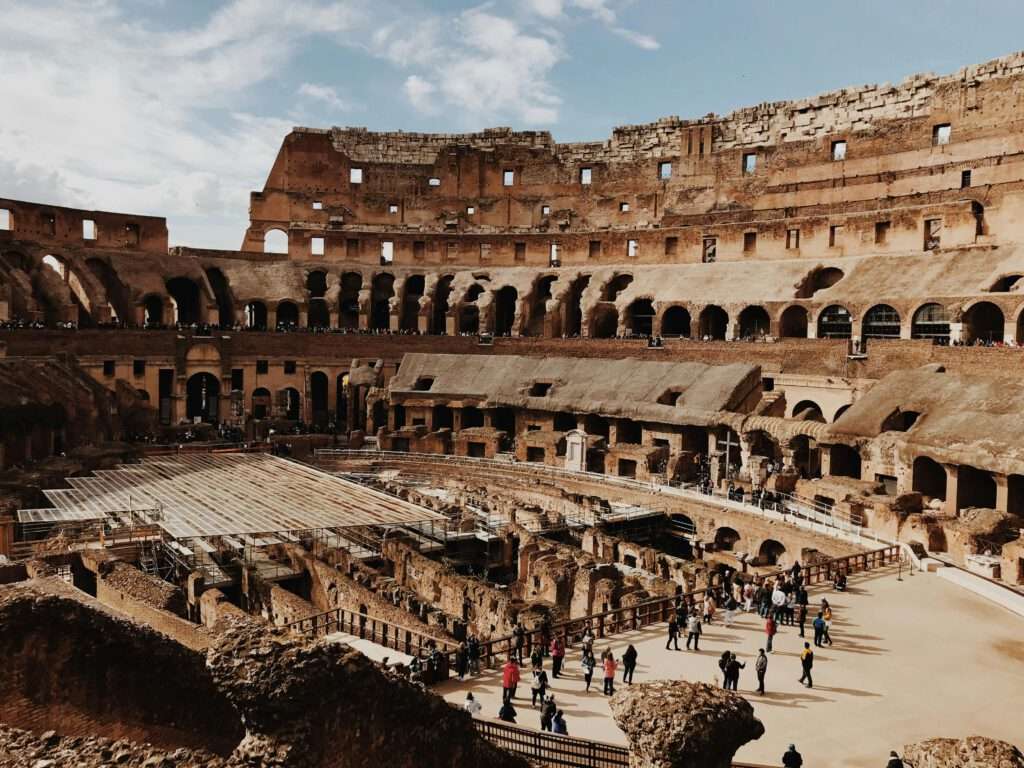
Imagine witnessing the majesty of the Colosseum in the 1st century. It is a spectacle that still commands admiration today. The Colosseum was constructed under the Flavian emperors. Surprisingly, Emperor Vespasian built it on the site of a drained artificial lake.
This symbolic location marked the end of the tyrannical era and the beginning of a better one. Consequently, the previous ruler’s private lake became a place that could host thousands of Romans.
The Colosseum, with its millennia-long history, has hosted countless events, from fierce gladiatorial combats to dramatic battles between men and wild animals. With its millennia-long history, the Roman Amphitheatre has hosted countless events. From serving as a stage for thousands of combats between gladiators to life- or-death fights between men and animals.
The arena has also served as a church and a fortress during medieval times.
As one would expect, the Colosseum has experienced its fair share of nature’s wrath, including lightning, earthquakes, and human destructiveness in the form of vandalism. However, it endures to this day.
6. Machu Picchu
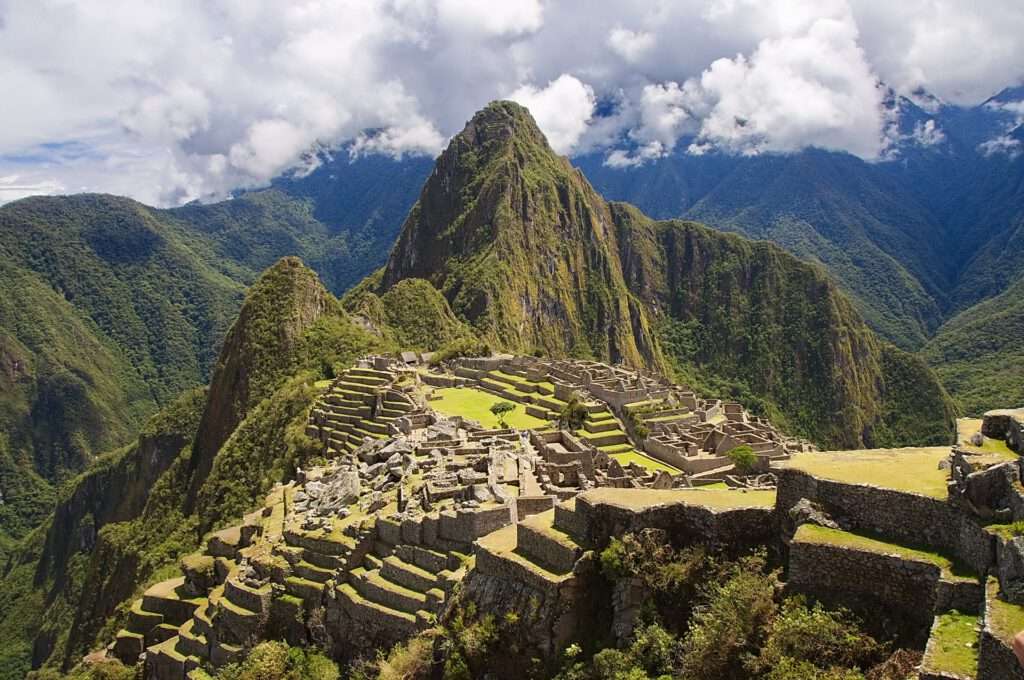
Situated in the Andes Mountains near Cuzco, Peru, this Inca site has fascinated archaeologists since Hiran Bingham discovered it in 1911.
What sets Machu Picchu apart is its remarkable state of preservation, although it was built during the 15th and 16th centuries.
After the Spanish conquest of Peru led to the expulsion of the Inca people from the region, this architectural marvel was lost to the world. Archeologists believe that the historical site used to be a royal estate or a sacred religious site for Inca leaders.
The area covers over five miles and has 3,000 stone steps. Today, Machu Picchu’s allure remains undiminished, as it continues to draw visitors eager to explore its ancient landscapes.
5. Christ the Redeemer
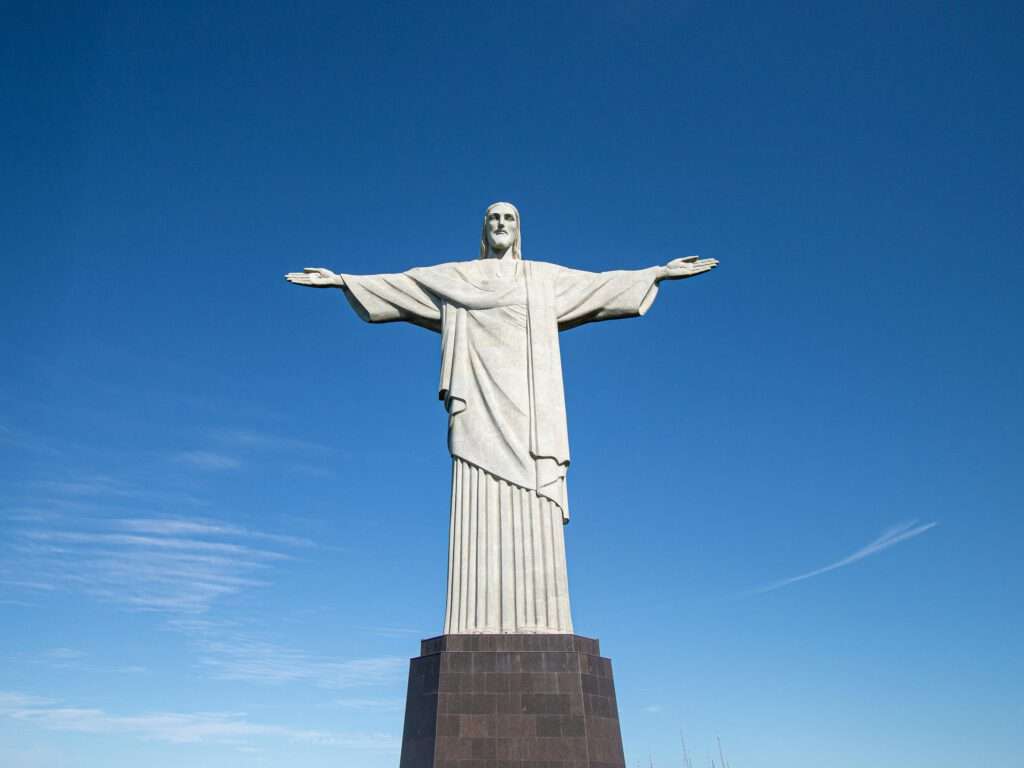
Perched atop Mount Corcovado in Rio de Janeiro, Brazil, is the iconic colossal statue of Jesus. Erected in 1931 after the First World War to serve as a symbol against the “sea of godlessness”. Made evident by the war, today, it is not a stretch to claim that the majestic figure has become synonymous with Brazil itself.
Christ the Redeemer stands a massive 98 feet tall, with its outstretched arms spanning 92 feet. It is the largest Art Deco sculpture in the world.
This art style is distinguished by its simple, clean shapes, “streamlined” look, and stylized ornamentation. It is made of reinforced concrete and covered in approximately six million tiles.
Christ the Redeemer remains a powerful symbol of faith and resilience in Brazil, drawing almost two million people every year.
4. Angkor Wat
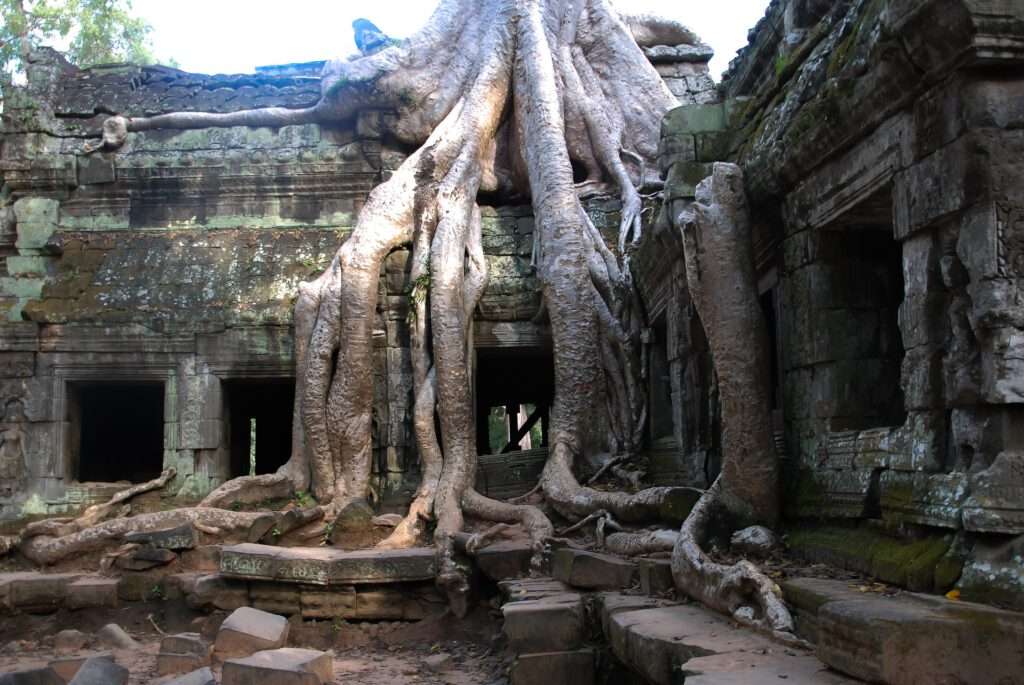
Built in the 12th century, this remarkable temple is the centerpiece of one of the largest and most populated kingdoms in Southeast Asia. Its breathtaking architecture resembles something straight out of a fantasy realm.
The five towering spires represent the summits of Mount Meru, believed to be the home of the gods. Although it was once bustling with activity, Combodia’s most important monument was abandoned in the early 15th century.
The entire structure was made with sandstone, which unfortunately does not hold well in tropical climates. The temple’s delicate carvings suffered the ravages of time and weather during this period of abandonment. Thankfully, intensive restoration efforts commenced in the late 20th century.
Today, Angkor Wat has been removed from the list of World Heritage in Danger, which means visitors can continue to enjoy the marvels of the ancient civilization for years to come.
3. Taj Mahal
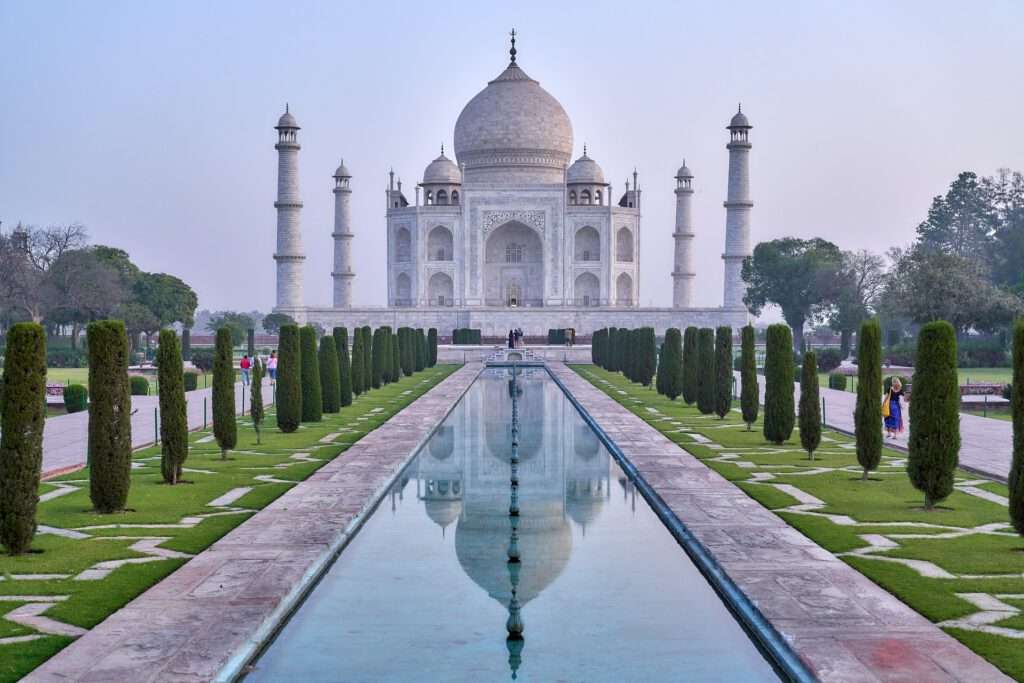
A striking building has stood tall in the Yamuna River in Agra, India, since its completion in 1653.
This immense mausoleum of white marble was commissioned by Mughal Emperor Shah Jahan in memory of his favorite wife, Mumtaz Mahal.
It took more than 22 years and the collective efforts of a board of architects led by Ustad Ahmad Lahauri and thousands of artisans to make this vision a reality.
The white structure is adorned with exquisite carvings, precious stones, and beautiful gardens complimented with pools and lush greenery. In 1983, the Taj Mahal was named “the jewel of Muslim art in India and one of the universally admired masterpieces of the world’s heritage”.
2. Lalibela Churches
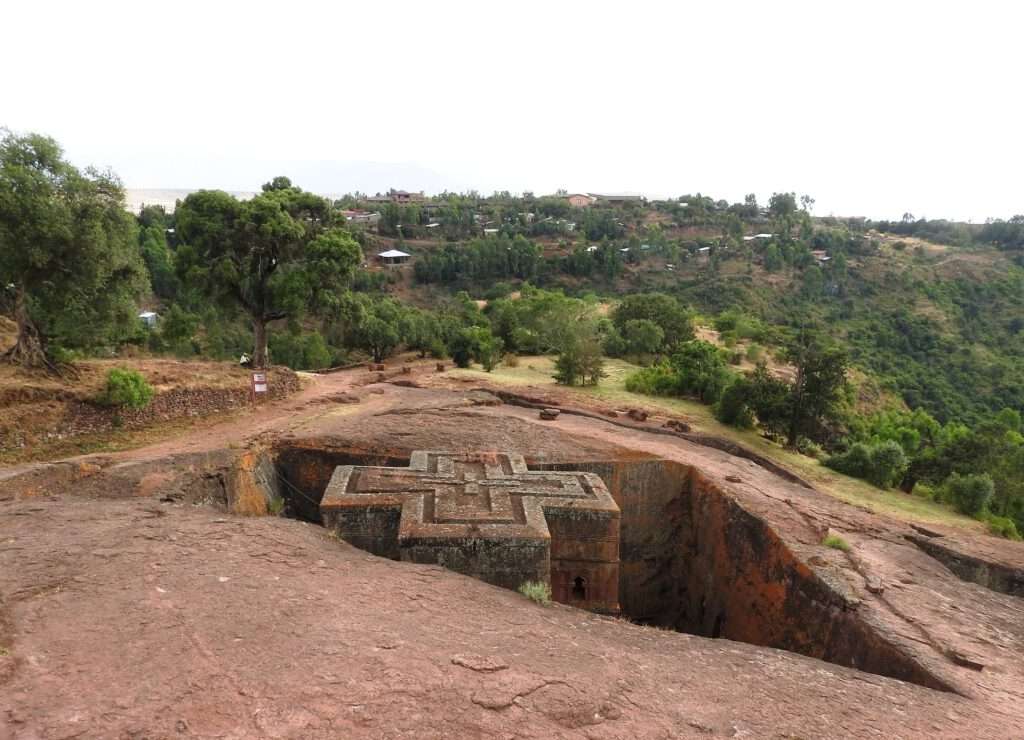
If there is a will, there is a way, and the ancient Ethiopians found a way to make the impossible possible by carving monolithic churches out of the mountains of Ethiopia.
These 11 medieval rock-hewn cave churches were built in the 13th century with chisels, and they serve as sacred locations of Ethiopian Christianity. Named after King Lalibela, who commissioned their construction, these churches were created as a “New Jerusalem” after Muslim conquests made traditional pilgrimages to the Holy Land unsafe.
This incredible feat of skill and determination boasts a complicated drainage system, trenches, and ceremonial passages. Despite being carved directly out of the mountains, the architectural wonders have endured the relentless forces of nature. Currently, a community of monks monitors
and maintains the sites.
1. The Great Wall of China

Witnessing this masterpiece in person will leave anyone dumbfounded by the genius of ancient Chinese engineers.
Spanning over 13,000 miles along China’s northern borders, you’d understand why people used to claim it was the only man-made structure visible from space.
Construction spanned multiple dynasties, and it was completed during the Ming
Dynasty in the 18th century. However, the earliest work on the Great Wall of China dates back to 300 B.C.
This Wall features a list of strategic structures, including watchtowers, beacon towers, and fortresses, each meticulously designed to defend the country from invaders.
While the Great Wall no longer serves its original military purpose, it remains a powerful symbol of China’s sovereignty and cultural heritage.


Comments
David
December 8, 2015 at 6:55 pmI wouldn’t have thought it, but there were some points that I didn’t know. 🙂